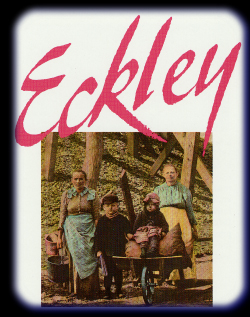
Eckley
is one of the hundreds of company mining towns or
"patches" built in the anthracite region of Pennsylvania
during the nineteenth century.
In
1854, the mining firm of Sharpe, Leisenring and
Company, later known as Sharpe, Weiss and Company,
leased land from the Tench Coxe Estate of Philadelphia
and began work on the Council Ridge Colliery and
the village of Eckley. The village, built near the
colliery where the coal was mined and processed,
provided housing for the miners and their families.
Its stores, schools, and churches supplied the economic,
educational, and religious needs of the villagers.
By owning the village, the company had greater control
over the lives of their workers.
After
1875, when the Sharpe, Weiss lease expired, the
Coxe family either operated the colliery themselves
or leased it to other coal companies. During this
period many changes took place. To Eckley came a
succession of immigrant groups seeking economic
opportunities and religious or political freedom.
English, Welsh, and German miners were supplanted
by the Irish immigrants and then by southern and
eastern Europeans. These groups formed an ethnic
mosaic typical of the anthracite region.
Strip
mining gradually replaced underground mining. Steam
shovels stripped away the land around Eckley as
well as part of the village. The work force at the
colliery and the population of Eckley gradually
declined. From a population that numbered over one
thousand in 1870, only few villagers remain.
During
the liquidation of the Tench Coxe Estate, Eckley
was sold to coal company owner George Huss. The
village was separated from the mining operation
in 1969 when the Huss Coal Company sold Eckley to
the Anthracite Historical Site Museum, Inc., a group
of Hazleton area businessmen. They deeded it to
the Commonwealth of Pennsylvania in 1971 to be administered by the Pennsylvania Historical and Museum Commission
The
old Council Ridge Colliery is gone, but its village
survives. Eckley preserves a way of life which dominated the anthracite region
for over 140 years.
|